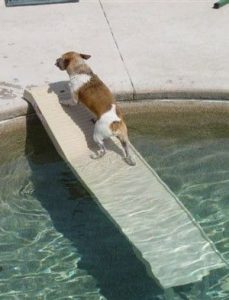Harmony Animal Hospital's Blog
Jesus Knows You’re Here
A burglar broke into a house one night. He shined his flashlight around, looking for valuables when a voice in the dark said, ‘Jesus knows you’re here.’  The burglar nearly jumped out of his skin, clicked his flashlight off, and froze.
The burglar nearly jumped out of his skin, clicked his flashlight off, and froze.
When he heard nothing more, after a bit, he shook his head and continued.
Just as he pulled the stereo out so he could disconnect the wires, clear as a bell he heard ‘Jesus is watching you.’
Freaked out, he shined his light around frantically, looking for the source of the voice.
Finally, in the corner of the room, his flashlight beam came to rest on a parrot.
‘Did you say that?’ he hissed at the parrot.
‘Yep’, the parrot confessed, then squawked, ‘I’m just trying to warn you that Jesus is watching you.’
The burglar relaxed. ‘Warn me, huh? Who in the world are you?’
‘Moses,’ replied the bird.
‘Moses?’ the burglar laughed. ‘What kind of people would name a bird Moses?’
‘The kind of people that would name a Rottweiler Jesus.’
Pool Safety Isn’t Just for People
Pool time can be a great way for dogs to get exercise and cool off when it is hot, but pools can pose a drowning hazard for dogs as well. The getting in part is easy, it’s the getting out part that can be difficult. Dogs, unfortunately, can fall into a pool because of poor eyesight, arthritis, or even chasing something. So, even if your dog doesn’t like the pool, he needs to be trained on how to exit the pool. A dog should be trained that the stairs are the only entry and exit point that a dog uses for a pool. If you have a small dog, you will need smaller steps using bricks or better yet, ramps are available for in-pool use.
easy, it’s the getting out part that can be difficult. Dogs, unfortunately, can fall into a pool because of poor eyesight, arthritis, or even chasing something. So, even if your dog doesn’t like the pool, he needs to be trained on how to exit the pool. A dog should be trained that the stairs are the only entry and exit point that a dog uses for a pool. If you have a small dog, you will need smaller steps using bricks or better yet, ramps are available for in-pool use.
Whole Dog Journal has an excellent in depth article that we could not beat so we suggest heading over to their site and reading. Click here
Keeping Rabbits & Guinea Pigs as Pets
Keeping Rabbits & Guinea Pigs as Pets
by Dr Heather Johnston
Rabbits (Lagomorphs) and Guinea Pigs (Cavies) are smaller pets with lots of personality. Although rabbits tend to be more solitary and G. Pigs more social within their own species both of these pets can make excellent family pets. Both species can be litter box trained and because of this are frequently given free roam in a . Because of the natural curiosity and urge to chew we recommend that your pet be confined when not being immediately supervised. Although it is wonderful to allow your pet so much opportunity for exercise, there are many life threatening and costly dangers in our homes. To keep it safe we recommend confining your rabbit or G. pig to a small pet proofed room or a suitable cage while they are not being supervised. Rabbits in particular like to chew on electric cords often with deadly outcomes.
For most pets a suitable cage is constructed of a sheet metal or hard plastic tray on the bottom with open wire bars or mesh on the sides and top. If you must keep your pet on a wire grate, the feet must be checked daily for injuries or signs of wear from the wire. Most often it is better to keep your pet on shavings (aspen, pine, or paper. DO NOT USE CEDAR as it can aggravate respiratory conditions). Because most animals will flip or quickly soil water bowls, water bottles are more practical. Finally because rabbits and G. pigs in the wild were prey animals, you pet should have an area to hide in. Do not forget to clean this area daily as humidity will build up more quickly due to decreased airflow. This can lead to frequent urinary tract infections, bladder stones, or skin infections.
Diet
Two of the most common health problems in these pets are obesity and dental disease. Both can be prevented or controlled through proper diet. Feeding hay as a large portion of the diet helps to wear teeth appropriately and provides a low calorie and high fiber diet to support healthy digestion. We recommend the following guidelines for your pet rabbit or g. pig:
75% HAY: timothy or mixed/orchard grass. Alfalfa is ok for growing animals but is too high in calcium and protein for most adults.
15% PELLET (specific for the species) timothy is preferred to alfalfa.
10% TREATS: including fruits, vegetables, and seeds or nuts.
- pigs must receive vitamin C from their diet because their body is unable to make this vitamin. They must be feed pellet designed for g. pigs (vitamin C added). We also recommend supplementing your g. pig with 125 mg of vitamin C daily (½ of pediatric vitamin C chewable tablet daily).
Health Concerns
Because of the high risk of false pregnancy and uterine cancer we recommend spaying your female rabbit. This can be done anytime after four months of age. Spaying female and castrating male rabbits frequently decreases undesirable hormone related behavior such as urine marking, mounting, and some biting. Unfortunately these procedures do not always influence rabbit fighting with other rabbits. Because g. pigs are often housed in groups males are routinely castrated if they are to be kept with females. This can be done anytime after four months. Female g. pigs should never be bred for the first time after they are seven months old because their pelvis becomes too rigid to deliver the large giglets (baby g. pigs) safely. If pregnancy occurs after seven months the g. pig will need a cesarean section to deliver the giglets.
Both rabbits and g. pigs are prone to develop urinary/bladder stones because of the large amount of calcium normally found in their urine. If an animal is seen straining and not passing urine or feces please contact your veterinarian immediately as this is a medical emergency.
Because of the unique digestive system found in rabbits and g. pigs avoid giving them milk products (except yogurt sometimes used for its live bacterial cultures) and large amounts of nuts, seeds and foods high in sugars). These foods can cause bloating which can be a life threatening condition. Owners should recognize bloated animal. An animal suffering from bloat will have a distended stomach (often bulging behind the rib cage), will sit with its neck and head extended up, will push its elbows away from its body (this helps the animal breath easier), and will often teeth grind. It maybe helpful to have pediatric simethacone (a brand name such as gas EX) in your first aid kit to give to a bloating animal after talking to your veterinarian.
A final health concern for both species is heat stroke. Because neither animal sweat and both animals have large abdomens compared to their surface area they have more trouble cooling themselves. High heat and humidity of south Florida can be difficult for these species to deal with. If your pet accidentally becomes over heated remove them to cool area immediately. If they are showing signs of loss of consciousness or bloating go immediately to your veterinarian.
More Information
Owning rabbits and guinea pigs can be a rewarding experience with a little special care on your part. Following is a list of helpful websites:
www.rabbit.org The American House Rabbit Society
www.acbaonline.com The American Cavy Breeders Association
www.guinealynx.info/main.html Guinea Health Linx on line
www.oxbowhay.com Oxbow Company
www.netvet.wustl.edu/rabbits.htm a list of many rabbit sites



